| View previous topic :: View next topic |
| Author |
Message |
yash
Joined: 12 Aug 2020
Posts: 4
Location: Bohinj


|
 Posted: Aug 13, 2020 06:04 Post subject: Please help with identification :) Posted: Aug 13, 2020 06:04 Post subject: Please help with identification :) |
|
|
Hi!
I found this stone while digging at 3m depth into a hill between a house and a road (which doesn't rule out being brought from elsewhere) surrounded by forest (part of a limestone mountain range that's rich in iron). I could find only this one. Though it looks as it should be a sort of hematite, some of it's properties do not check out:
Magnetic: no, not even when heated
Conductive: no (checked with electrical meter - maybe i should have tried higher currents?)
Hardness: 5-6 (scratches steel kitchen knife but not a harder steel knife)
Streak: brown
Specific gravity: 5-5.5
Color of scratched surface is the same
Smell: none
Taste: none
Color: as in the pictures - dark dull submetallic brown with reddish subtones
Length of specimen: 2.7cm
Any suggestions/help would be appreciated :)
| Mineral: | Don't know |
| Description: |
|
| Viewed: |
11967 Time(s) |
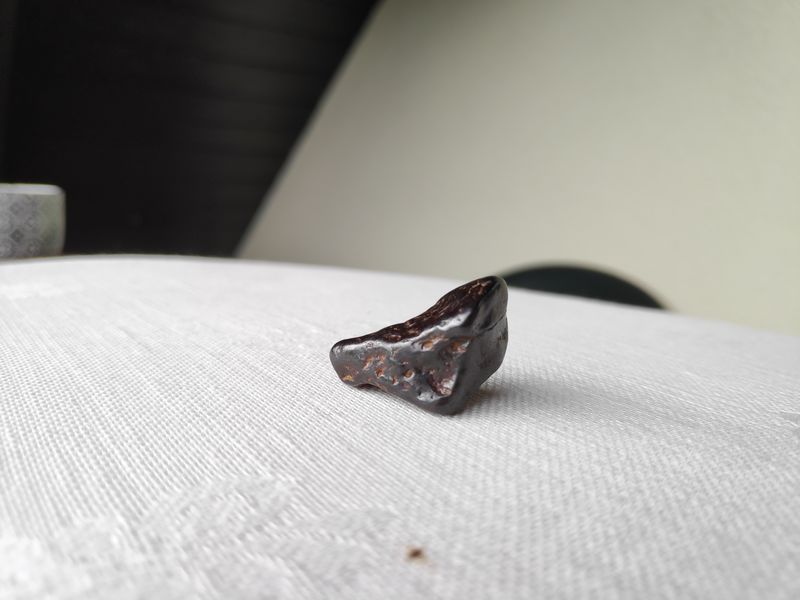
|
| Mineral: | ?? |
| Locality: | | Slovenia |  |
|
| Dimensions: | 2.7cm |
| Description: |
|
| Viewed: |
11961 Time(s) |
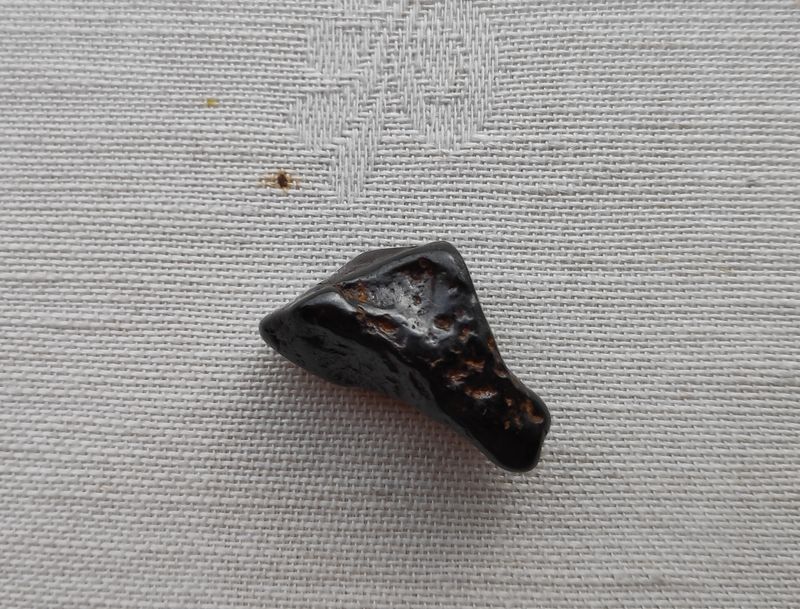
|
| Mineral: | ??? |
| Description: |
|
| Viewed: |
11945 Time(s) |
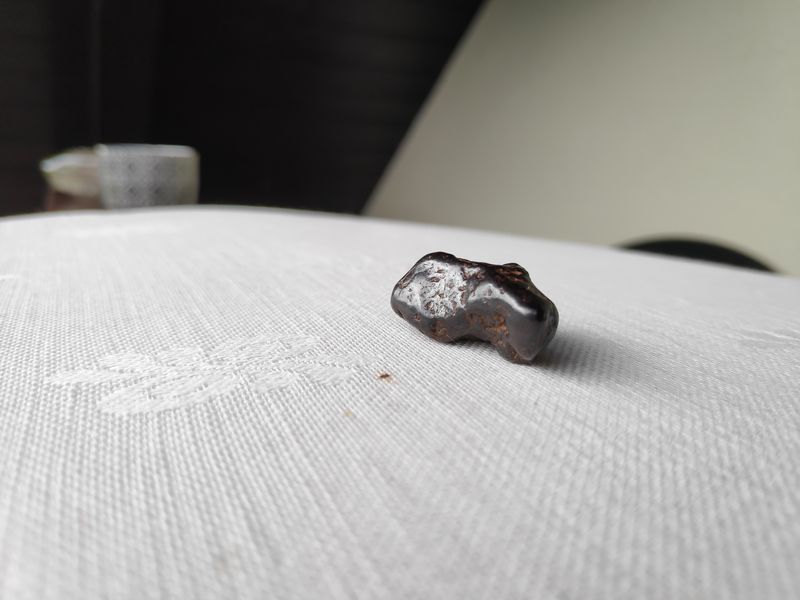
|
| Mineral: | ? |
| Locality: | | Slovenia |  |
|
| Dimensions: | 2.7cm |
| Description: |
|
| Viewed: |
11947 Time(s) |
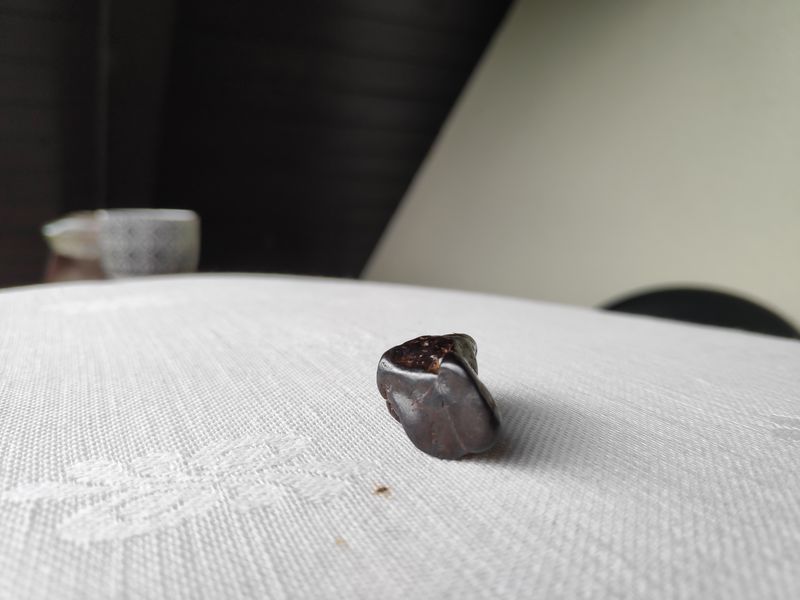
|
|
|
| Back to top |
|
 |
SteveB
Joined: 12 Oct 2015
Posts: 238
Location: Canberra


|
 Posted: Aug 13, 2020 06:48 Post subject: Re: Please help with identification :) Posted: Aug 13, 2020 06:48 Post subject: Re: Please help with identification :) |
|
|
| An odd one, it has visual characteristics of common aerolites but those characteristics are only found in iron based and so would be magnetic which yours failed. I would guess in that case it's a concretion instead. These are often magnetic but not always and often pebble sized have that dark shiny smooth exterior appearance.often found close to man made activity and construction where dusts and metal oxides find there way into the surrounding environment and dissolved by rains, leach into the ground and form around something like how a pearl forms around a bit of grit in an oyster. Others will offer the opinion its slag of some sort but I don't see anything to indicate that.
|
|
| Back to top |
|
 |
kushmeja
Joined: 28 Jul 2014
Posts: 244
Location: New Jersey



|
 Posted: Aug 13, 2020 07:09 Post subject: Re: Please help with identification :) Posted: Aug 13, 2020 07:09 Post subject: Re: Please help with identification :) |
|
|
| It looks like Goethite, which is an iron oxide mineral that matches up with the hardness & streak.
|
|
| Back to top |
|
 |
SteveB
Joined: 12 Oct 2015
Posts: 238
Location: Canberra


|
 Posted: Aug 13, 2020 07:20 Post subject: Re: Please help with identification :) Posted: Aug 13, 2020 07:20 Post subject: Re: Please help with identification :) |
|
|
| kushmeja wrote: | | It looks like Goethite, which is an iron oxide mineral that matches up with the hardness & streak. |
but not Magnetic test. Goethite concretion is possible I suppose but it must be magnetic. Can't ignore some tested facts just to offer a possibility that fails the properties tests. From what I know goethite is always magnetic.
|
|
| Back to top |
|
 |
yash
Joined: 12 Aug 2020
Posts: 4
Location: Bohinj


|
 Posted: Aug 13, 2020 07:31 Post subject: Re: Please help with identification :) Posted: Aug 13, 2020 07:31 Post subject: Re: Please help with identification :) |
|
|
| Thanks for the reply! Do you suppose I could find out more about it if I break it open?
|
|
| Back to top |
|
 |
kushmeja
Joined: 28 Jul 2014
Posts: 244
Location: New Jersey



|
 Posted: Aug 13, 2020 07:39 Post subject: Re: Please help with identification :) Posted: Aug 13, 2020 07:39 Post subject: Re: Please help with identification :) |
|
|
| SteveB wrote: | | kushmeja wrote: | | It looks like Goethite, which is an iron oxide mineral that matches up with the hardness & streak. |
but not Magnetic test. Goethite concretion is possible I suppose but it must be magnetic. Cant ignore some tested facts just to offer a possibility that fails the properties tests. From what I know goethite is always magnetic. |
Goethite is often only very weakly magnetic, and may also be mixed with something else as well. With a weaker magnet, it may not show any attraction at all in my experience.
|
|
| Back to top |
|
 |
SteveB
Joined: 12 Oct 2015
Posts: 238
Location: Canberra


|
 Posted: Aug 13, 2020 08:44 Post subject: Re: Please help with identification :) Posted: Aug 13, 2020 08:44 Post subject: Re: Please help with identification :) |
|
|
Thanks, my understanding was opposite, my experience with goethite is poor.
Breaking it open I don't recommend, ever really. Just personally I object to it is all. Its not likely to prove definitively what it is, then you still have no answer and a broken specimen. Nothing externally indicates a broken piece will reveal a fantastic interior. Properly cut in half and polished might be interesting or not.
Is it looking exactly as you found it? Or have you cleaned it much? High iron content usually rusts a lot when exposed to the air. And how you clean it effects that.
It should be asked what sort of magnet did you test with? My iron rich specimens I collected using magnets so I guess my experience is biased against non-magnetic iron variants.
|
|
| Back to top |
|
 |
Bob Carnein
Joined: 22 Aug 2013
Posts: 354
Location: Florissant, CO



|
 Posted: Aug 13, 2020 09:30 Post subject: Re: Please help with identification :) Posted: Aug 13, 2020 09:30 Post subject: Re: Please help with identification :) |
|
|
| How accurate is your SG measurement? It's good for hematite but too high for goethite. Is the streak reddish brown or yellowish brown (which?)? If reddish, it's probably hematite; if yellowish, I'd think goethite is most likely and would check the SG again. I don't think magnetism (or a lack thereof) is a reliable property here.
|
|
| Back to top |
|
 |
R Saunders
Joined: 28 Jul 2018
Posts: 126
Location: Michigan



|
 Posted: Aug 13, 2020 09:48 Post subject: Re: Please help with identification :) Posted: Aug 13, 2020 09:48 Post subject: Re: Please help with identification :) |
|
|
| You wrote, Hardness: 5-6 (scratches steel kitchen knife but not a harder steel knife). While I have not done this I thought you try to scratch a line on the stone or mineral with a knife blade. Not make a scratch line on a knife blade? Which way is correct? Thanks
|
|
| Back to top |
|
 |
Pete Richards
Site Admin
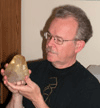
Joined: 29 Dec 2008
Posts: 843
Location: Northeast Ohio



|
 Posted: Aug 13, 2020 11:54 Post subject: Re: Please help with identification :) Posted: Aug 13, 2020 11:54 Post subject: Re: Please help with identification :) |
|
|
| R Saunders wrote: | | You wrote, Hardness: 5-6 (scratches steel kitchen knife but not a harder steel knife). While I have not done this I thought you try to scratch a line on the stone or mineral with a knife blade. Not make a scratch line on a knife blade? Which way is correct? Thanks |
Both ways are correct! If the knife and the mineral are essentially the same hardness, they will each scratch the other (assuming there is a decent point on the mineral to scratch with). In this case it is a bit tricky because different steels have different hardness, and there may not be any source of info about it for the steels that one has on hand. The result of 5 - 6 may be about as good as one can do with this test.
_________________
Collecting and studying crystals with interesting habits, twinning, and epitaxy |
|
| Back to top |
|
 |
yash
Joined: 12 Aug 2020
Posts: 4
Location: Bohinj


|
 Posted: Aug 13, 2020 18:37 Post subject: Re: Please help with identification :) Posted: Aug 13, 2020 18:37 Post subject: Re: Please help with identification :) |
|
|
@SteveB: yes, it is as i found it. I only used a toothbrush and water because all the dirt fell right off. Except for the 2 scratch marks i made to check if the outside color is from patina and to be sure of conductivity. The photos were taken 8 days after discovering and washing but it doesn't seem to have rusted (even the rust-like pores aren't changing in any way). I should try putting it into salty water for a day, see what happens.
I used a speaker magnet of which i'm not sure if it's strong enough, though it works well with other iron objects. I'll try to find a stronger one.
@Bob Carnein: scale estimated 8.4g and my mini measuring cup 1.6ml = SG of 5.25, so i gave them some room for error
The streak is a reddish brown so all points to hematite? How strong of a magnet should i get or how much must i heat the specimen for it to become magnetic?
Is antiferromagnetism also an option for hematite?
@R Saunders: i tried it both ways and the result was the same. It also left a scratch on glass (at least the type i had at hand).
|
|
| Back to top |
|
 |
Pete Richards
Site Admin

Joined: 29 Dec 2008
Posts: 843
Location: Northeast Ohio



|
 Posted: Aug 13, 2020 21:27 Post subject: Re: Please help with identification :) Posted: Aug 13, 2020 21:27 Post subject: Re: Please help with identification :) |
|
|
This looks like a piece of a weathering rind from a stone that has sat in the soil where it is repeatedly wet with rainwater filtering down and then dried. I can't give details about the kind of stone, but I have seen such pebbles (or parts of them) with a powdery zone inside and then more or less altered rock in the center. My guess is that repeated wetting and drying has led to the deposition of iron oxides sourced both from the rock and from the surrounding deposit.
If this is anywhere near correct, we are not really dealing with a single mineral. It is likely to be composed of several iron oxides and hydroxides, maybe some manganese minerals thrown in for good measure, and some grains of sand or silt of unknown composition frozen into the chemically-deposited rind. Standard tests such as have been tried would not be very reliable because they are designed for identifying single minerals (mostly single crystals), whereas this is more like a rock with different constituents with different properties.
The process that forms such materials is quite different from concretion formation, as suggested earlier, in that the latter occurs early in diagenesis of soft sediment that will become a sedimentary rock, while the former occurs during the weathering of rock fragments in a terrestrial environment. For us, this is usually in thick glacial deposits like valley fills and moraines.
_________________
Collecting and studying crystals with interesting habits, twinning, and epitaxy |
|
| Back to top |
|
 |
yash
Joined: 12 Aug 2020
Posts: 4
Location: Bohinj


|
 Posted: Aug 14, 2020 04:43 Post subject: Re: Please help with identification :) Posted: Aug 14, 2020 04:43 Post subject: Re: Please help with identification :) |
|
|
| Pete Richards wrote: | This looks like a piece of a weathering rind from a stone that has sat in the soil where it is repeatedly wet with rainwater filtering down and then dried. I can't give details about the kind of stone, but I have seen such pebbles (or parts of them) with a powdery zone inside and then more or less altered rock in the center. My guess is that repeated wetting and drying has led to the deposition of iron oxides sourced both from the rock and from the surrounding deposit.
If this is anywhere near correct, we are not really dealing with a single mineral. It is likely to be composed of several iron oxides and hydroxides, maybe some manganese minerals thrown in for good measure, and some grains of sand or silt of unknown composition frozen into the chemically-deposited rind. Standard tests such as have been tried would not be very reliable because they are designed for identifying single minerals (mostly single crystals), whereas this is more like a rock with different constituents with different properties.
The process that forms such materials is quite different from concretion formation, as suggested earlier, in that the latter occurs early in diagenesis of soft sediment that will become a sedimentary rock, while the former occurs during the weathering of rock fragments in a terrestrial environment. For us, this is usually in thick glacial deposits like valley fills and moraines. |
Wow, thanks, that makes the most sense (you've opened up a whole new world for me to read about), because even though i found it at a height of about 1000m above sea level, the hill is still part of a valley formed by a glacier. I also found out that they were digging for iron and aluminum ore a couple of centuries ago. So it might be the aluminum that is non-magnetic, and an array of materials making it non-conductive.
I'm sorry if this means i posted this topic in the wrong department, but by the looks of the specimen, i assumed it is a single mineral.
So i'm declaring this topic solved, except if anyone has anything more to add.
Thank you all very much, i was almost flattered by all your fast replies :D
Cheers from Slovenia
|
|
| Back to top |
|
 |
|




